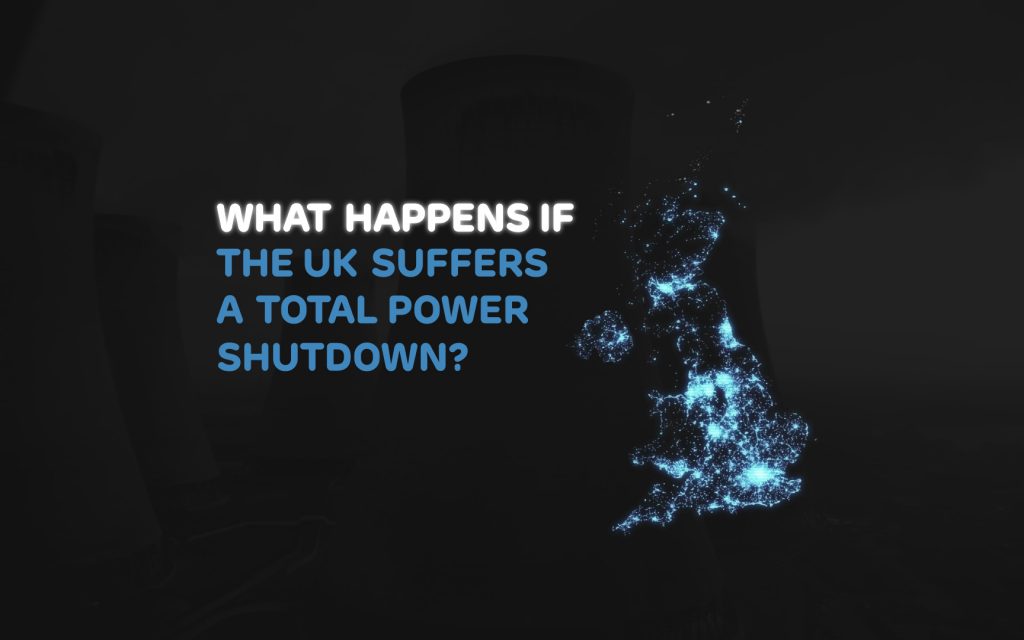Movies where major cities are razed to the ground or overrun by zombies are good fun when watched safe in the knowledge that such disasters are never likely to happen in the UK.
But how prepared would Britain’s infrastructure be if faced with a real disaster? If, for example, something were to happen that caused the national electricity grid to shut down? What would happen next?
Of course, the chance of this ever happening is remote in the extreme. Nonetheless, Britain has had a contingency plan in place for decades.
Britain’s ultimate power back up
First things first – if the whole of the network, including the power stations supplying the national high voltage electricity distribution network (the grid), loses power, you would need to restart those individual power stations before they can get the grid powered up again.
The challenge? Normally, all power stations need electrical supply to start up. But with a total electricity blackout, there’s no electricity to restart the system.
That’s why the reboot procedure is called ‘Black Start’ – and it’s one the most important, yet little-known back up plans in the UK.
The good news? There has never been a blackout so widespread that Drax has been asked to do a Black Start.
Preparing for the unlikely
But that’s not to say that such a procedure may never be needed.
In October 1987, there was a regional Black Start in the wake of the powerful hurricane that hit the south of the country. The storm damage left Kent and Sussex disconnected from the National Grid – but thanks to Black Start contingency plans, most people barely noticed. Kingsnorth Power Station restored power to the area and it ran independently, cut off from the rest of the Grid, until repairs enabled it to be connected up again.
A total, nationwide grid blackout may be unlikely, but that doesn’t mean it’s not prepared for. Tests happen regularly to assess how long it would take to restart an individual generation unit at a major power station, bring it up to capacity, and make sure that any Black Start would run smoothly.
The most recent test took place at Drax in July 2011, with representatives from the National Grid witnessing the procedure. To simulate blackout conditions, three of the generating units were disconnected from the grid. In that test, it took 83 minutes to return one unit back to service.
A simple plan
Not all power stations can do a Black Start – some simply do not have control ability to be the starting point of a system reboot. But modern coal, gas and biomass power plants are able to restart rapidly on demand. This is why Drax – first operational in the 1970s – is modern and responsive enough to be a key part of today’s Black Start planning.
The way it works is actually relatively simple: using smaller power sources to start ever bigger ones, scaling up and up until the entire country is powered up again.
Drax’s auxiliary generating units consist of three gas turbines which can be started from batteries. These would in turn generate enough power to restart one or two main generating units. The restarted generating units would be used as the backbone of an ‘island network’ – a network operating independently of the national grid – that would be grown by adding pockets of supply. The generating units would match the speed and frequency to create normal grid conditions and to restore supplies fast locally. Finally the affected area’s ‘island networks’ would be hooked up to each other so electricity can be distributed around the country with the reliability and stability we have become accustomed to.
Staying prepared
When the electricity market was privatised, there was a risk that such nationwide plans as Black Start could have fallen apart. To prevent this, formal contracts were put in place to continue to restart from scratch if necessary. Drax recently renewed its contract.
This makes Black Start – and Drax – as important as ever. If a disaster scenario ever struck for real, the most important back up plan you’d never heard of (until now) will swing into action.
This short story is adapted from a series on the lesser-known electricity markets within the areas of balancing services, system support services and ancillary services. Read more about system inertia, frequency response, reactive power and reserve power. View a summary at The great balancing act: what it takes to keep the power grid stable and find out what lies ahead by reading Balancing for the renewable future and Maintaining electricity grid stability during rapid decarbonisation.











